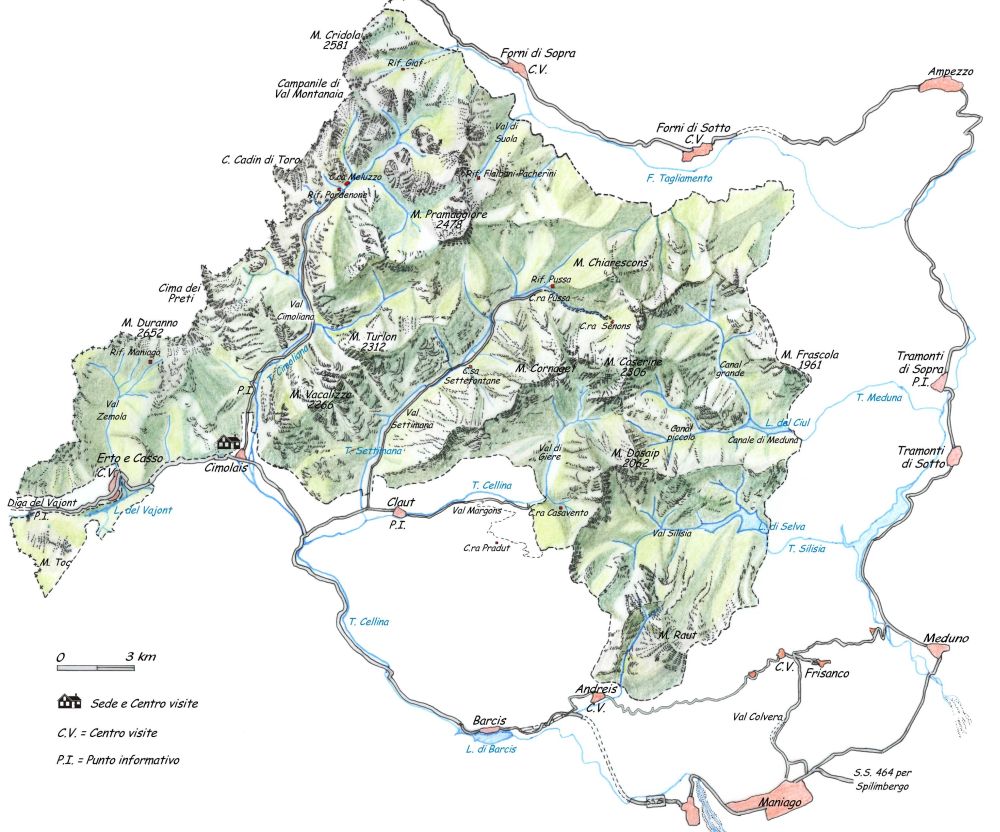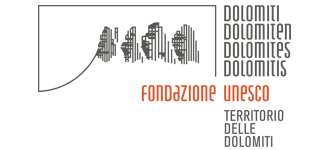HISTORY
Home | Park institution | History
The idea of establishing a nature reserve in the western part of the Region Friuli Venezia Giulia was born in 1973 with the document “First Proposals for the establishment of a Park in Alta Valcellina”. Five years later was drafted the Regional Urban Plan which identified the regional areas to be protected and within it was also included this territory field.
In the three years 1986/1989 was drafted the Plan of Conservation and Development on behalf of the Region and in consultation with the municipalities involved. The following year the municipalities of Andreis, Cimolais, Claut, Erto and Casso and Forni di Sopra adopted the Plan and the Park was established under the name of “Park of the Carnic Pre-Alps”; later, in 1991, with the support also of Forni di Sotto Municipality was signed an agreement that created a “Coordinating Committee” which occupied the start management of the protected area. The initiative to decide which the protected area were to be, at the beginning, was started by the local authorities concerned.

Finally in 1996, the Region Friuli Venezia Giulia promulgates the Regional Law #42 of September 30th , which, in adaptation to the national legislation (Law 394/1991), permanently establishes the “Regional Natural Park of the Friulian Dolomites”. “Parco Naturale Regionale delle Dolomiti Friulane”.
The park has as its general objective the preservation of the peculiarities of the area by improving the natural environment and its resources, but also to pursue a compatible development also proposing alternative models, promoting the naturalistic culture through educational activities and information and setting up research and monitoring activities on the territory.
The area of the Natural Park of the Friulian Dolomites concerns inhabited environments, although the presence of man and its work has left significant traces. In fact in different areas of the park we can find many structures (furnaces) for the manufacturing of lime.
Restoration and preservation of traditions are one of the Park’s objectives and that helped to support initiatives and projects like that of charcoal, old process for the transformation of wood into charcoal. Throughout the territory we can also find huts, ruins of shelters for shepherds, mule tracks, paths and numerous other signs of human presence in total respect of the environmental and natural balance.
The Natural Park of the Friulian Dolomites is also tasked to enhance and preserve these historical signs that are part of the precious ethnographic and natural heritage. Environmental ethics and respect of nature values were much more rooted in our ancestors that lived in symbiosis with the environment trying to respect it as much as possible, because it was the main source of livelihood, from which they took the raw materials for their work.
In fact, our “forefathers” lived mainly doing land-related works such as agriculture, livestock, hunting; they were woodsmen, shepherds, herdsmen, charcoal burners and craftsmen. To enhance these old crafts were born also some ethnographic museums: the Museum House Clautana housed inside the Visitors Center of Claut, and the Ethnographic Museum of Art and Rural Life of AndreisEco-museum Vajont, Da Li Mans Di Carlinthe Museo Etnografico Fornese.
The Visitors Center of the Poffabro, located between the beautiful landscape of one of the most beautiful villages in Italy, hosts a thematic exhibition“Dairy Art and Pastures in the Park”placed in the former village dairy, today Visitors Center and information desk of the Park.

